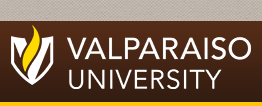The design and development of a Square Koch Fractal Slot Antenna for the BCON-2 satellite mission
Faculty Sponsor
Dan White
College
College of Engineering (COE)
Discipline(s)
Electrical Engineering
ORCID Identifier(s)
0009-0003-3882-6035, 0009-0001-9494-5683
Presentation Type
Poster Presentation
Symposium Date
Spring 4-24-2025
Abstract
The BCON-2 satellite mission aims to enhance downlink time by utilizing the receive-only ground stations of the Satellite Networked Open Ground Station SatNOGS network and optimizing the scheduling of satellite passes along its orbital footprint. Due to the physical constraints of the mission, it was not possible to develop a deployable ultra-high frequency antenna while also ensuring that the antenna operated with enough gain at a center frequency of 435 megahertz. To address this challenge, a Square Koch Fractal Slot Antenna was designed and developed as a compact and effective alternative.
The Square Koch Fractal Slot Antenna is formed using two second-iteration square Koch curves, each consisting of eight segments. The use of fractal geometries allows for miniaturization while maintaining effective operation within the ultra-high frequency band, making it a suitable solution for small satellite missions with significant design constraints. Building upon previous research, this work demonstrates how fractal slot antennas can provide optimized performance in restricted physical spaces. The antenna was designed, simulated, and fabricated to validate its effectiveness for communication applications in the BCON-2 satellite mission.
Recommended Citation
Jones, Ben and Malatlian, Thaddeus, "The design and development of a Square Koch Fractal Slot Antenna for the BCON-2 satellite mission" (2025). Symposium on Undergraduate Research and Creative Expression (SOURCE). 1437.
https://scholar.valpo.edu/cus/1437



Biographical Information about Author(s)
The inspiration for researching Square Koch Fractal Slot Antennas stemmed from Valparaiso University’s first satellite mission, BCON-2. As part of this mission, we were challenged to develop a UHF antenna operating at an amateur radio frequency, an opportunity that immediately captured our interest. Our curiosity was sparked during coursework in electromagnetic field theory and further fueled by our involvement in the University Nanosatellite Program. We also have experience with modeling with ANSYS and using a Vector Network Analyzer which helps test and ensure an antenna is operating the way it's supposed to. With our combined background and hands-on experience, we felt confident and motivated to take on this challenge, viewing it as both a practical application of our skills and a valuable contribution to an exciting university mission.